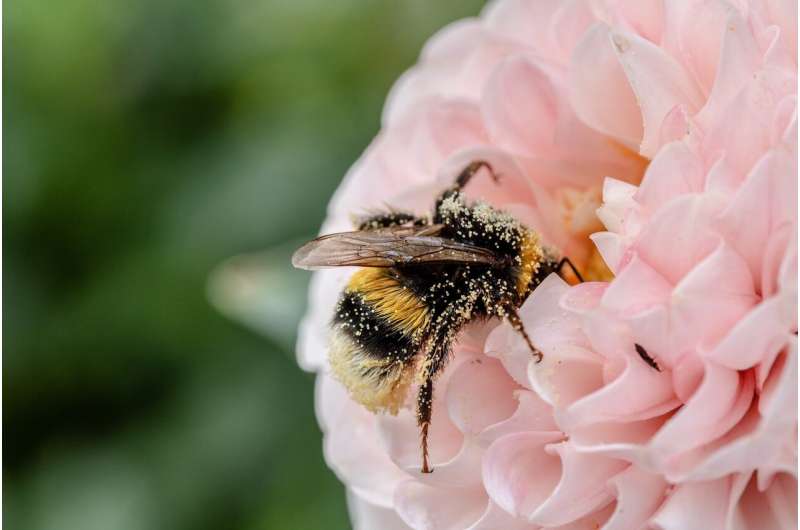Bees, fish and plants show how climate change's accelerating pace is disrupting nature in two key ways

The problem with climate change isn't just the temperature—it's also how fast the climate is changing today.
Historically, Earth's climate changes have generally happened over . Today, global temperatures are increasing by about .
Imagine a car speeding up. Over time, human activities such as burning fossil fuels in the atmosphere. These gases . This is like pressing the gas pedal. The faster the driver adds gas, the faster the car goes.
The 21st century has seen a dramatic acceleration in the rate of climate change, with global temperatures rising than in the previous century.
The are changing habitat ranges for plants and animals. In some regions, the pace of change is also throwing off the delicate timing of pollination, putting plants and pollinators such as bees at risk.
Some species are already migrating
Most plant and animal species can tolerate or at least recover from short-term changes in climate, such as a heat wave. When the changes last longer, however, organisms may need to migrate into new areas to adapt for survival.
Some species are already moving toward higher latitudes and altitudes with cooler temperatures, altering their geographic territory to stay within their optimal climate. , for example, have as ocean temperatures have risen.
Pollinators such as bees can also shift their ranges.
Bumblebees, for example, are adapted for cooler regions because of their fuzzy bodies. Some bumblebee populations have been of their geographic range and have been found in cooler regions to the north and in more mountainous areas. That could increase competition with existing bumblebee populations.
Plants and pollinators can get out of sync
Plants and their pollinators face another problem as the rate of climate change increases: Many plants rely on insects and other animals for seed and pollen dispersal.
Much of that pollen dispersal is accomplished by native pollinators. About 75% of plant species in North America require an insect pollinator—bees, butterflies, moths, flies, beetles, wasps, birds and bats. In fact, you eat depend on a pollinator, according to the U.S. Department of Agriculture.
So, even if a species successfully migrates into a new territory, it can face a mismatch of pollination timing. This is known as .
During the winter, insects go into a hibernation known as diapause, migrate or take up shelter underground, under rocks or in leaf litter. These insect pollinators use for when to emerge or when to migrate to their spring and summer habitats.
As the rate of climate change increases, the between pollinators and the plants they pollinate rise.
With an increase in temperature, many plants are . If bees or other pollinators emerge at their "normal" time, flowers may already be blooming, reducing their chance for pollination.
If pollinators , they may struggle to survive if their normal food sources are not yet available. Native bees, for example, they need for growing and thriving.
Wild bees are emerging earlier
This kind of shift in timing is already happening with bees in the U.S.
Studies have shown that the date wild bees emerge in the U.S. has earlier over the past 130 years, and the pace is accelerating.
One study found wild bees across species have been changing their phenology, or timing of seasonal activities, and over the past 50 years the emergence date is . That means wild bees were emerging roughly eight days earlier in 2020 than they did in 1970.
This trend of earlier emergence is generally consistent across organisms with the accelerating rate of climate change. If the , it could exacerbate the and result in inadequate pollination for plants that rely on them.
Pollinator decline and inadequate pollination already account for a in global fruit, vegetable, spice and nut production annually, a recent study found.
Without pollinators, —they are unable to absorb disturbances such as wildfires, adapt to changes, and recover from environmental stressors such as pollution, drought or floods.
Managing climate change
Pollinators face many other risks from human activities, including habitat loss from development and harm from pesticide use. Climate change adds to that list.
Taking steps to reduce the can help keep these species thriving and carrying out their roles in nature into the future.
Provided by The Conversation
This article is republished from under a Creative Commons license. Read the .![]()





















